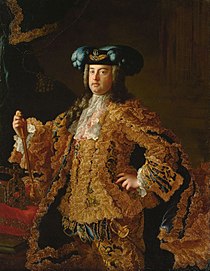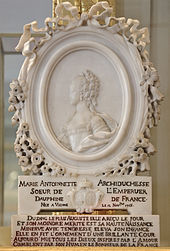
I'd like to extend a warm welcome to Katharine Ashe, who manages to juggle teaching history to undergrads with writing critically acclaimed historical romances. Her latest is In the Arms of a Marquess, hailed as "a unique adventure romance" by Romantic Times. In the Arms of a Marquess is part of Avon's new KISS and Teal campaign. For every copy sold, Avon will donate 25 cents to raise awareness and $50,000 for Ovarian Cancer research.
Even better, Katharine is here today to talk to us about one of my favorite topics: India.
Without further ado, Katharine Ashe!
 A Taste for the Exotic
A Taste for the Exotic I have a confession to make. My first beloved romance novel was not written by Jane Austen. Or by Georgette Heyer. Or Kathleen Woodiwiss. Or any other of the great ladies of English and American romance. The novel that made me a devotee of romance fiction doesn’t even take place on the shores of the Atlantic.
I fell in love with romance when at the tender, impressionable age of fourteen, I read THE FAR PAVILIONS by M. M. Kaye. That book engendered in me a taste for the exotic, for an epic realm of adventure that embraced romance, passion, pain, tragedy, violence, joy, and especially the triumphant power of love.
But perhaps my devotion to British India did not form so late in my youth. For — while I enjoyed Pooh and Tigger, Alice in Wonderland and Anne of Green Gables, the Velveteen Rabbit and Peter Rabbit, Cinderella, Sleeping Beauty and the Twelve Dancing Princesses — it was a clever, courageous mongoose who stole my young heart. Rudyard Kipling’s Rikki-Tikki-Tavi was my childhood hero. In facing a pair of cobras, Rikki battled darkness. He was not afraid to do violence for right, and in the end he saved the family he loved because he believed it to be his duty.
That defined heroism to me then. It still does. My notions of epic adventure, of romance and passion and truth were formed intimately in the fantastical tales of an exotic nineteenth-century east. It is entirely possible that my pen name came to be Ashe because my romance-loving spirit was forged with the reading Ms. Kaye’s story, whose hero’s English name is Ash. Likewise, it recently struck me that I nicknamed Octavia Pierce, the heroine of IN THE ARMS OF A MARQUESS, “Tavy”. (The subconscious is an awesome thing.)
But not all my interest in the Indian subcontinent under British rule got subsumed in the depths of my psyche. As a girl I took to the study of Indian history like a young monkey takes to trees. This passionate preoccupation followed me into college and then graduate school. Eventually I learned, of course, that tales like Kaye’s are fraught with romanticisms that misrepresent the reality of British imperial rule. I learned about the subaltern and theories that built upon Subaltern Studies in order to understand the diverse peoples of India even more profoundly. But despite this intellectual dashing of my girlish fantasies, the magic never disappeared.
Then one day while I was supposedly working very hard on my dissertation research amongst the dusty fourteenth-century Papal Registers of the Vatican Archives, a story idea came to me. I’d written a Regency romance in which the heroine’s younger sister was a girl on the verge of sixteen. A hoyden of a young miss with coltishly long legs and freckles across her nose, Octavia didn’t give a fig about what she looked like as long as she could read about the East Indies and dream of someday traveling there.
And then there was Ben — Lord Ben Doreé — a half-Indian, half-Anglo son of a disastrous second marriage, barely twenty, tall, dark and gorgeous, and looking over my shoulder as I wrote. And he said that Octavia would be his. He told me this in no uncertain terms.
Well we had some words (strong words; she was fifteen for heaven’s sake!). He said (with contained impatience), yes, he understood this, but perhaps we could come to an agreement. Finally I relented, but I told him he would have to wait a few years for her to become a lady, then after that he would lose her… for a time. He glowered at that last bit. I cowered a little (he’s the dangerous and mysterious type), but I stood fast.
Then I ran for my books. And for my friends. Scholars of India, they cheerfully answered my questions and pointed me toward more resources, never knowing that the rich, tormented history of British India was to be the bed onto which I laid down a pair of lovers — a young gentleman and lady destined to love, to lose, and to love again quite scandalously, and quite happily ever after.
What tales of foreign lands ignited your young imagination?
You can learn more about Katharine and her books on her website: www.katharineashe.com.
Thanks for joining us, Katharine!

























